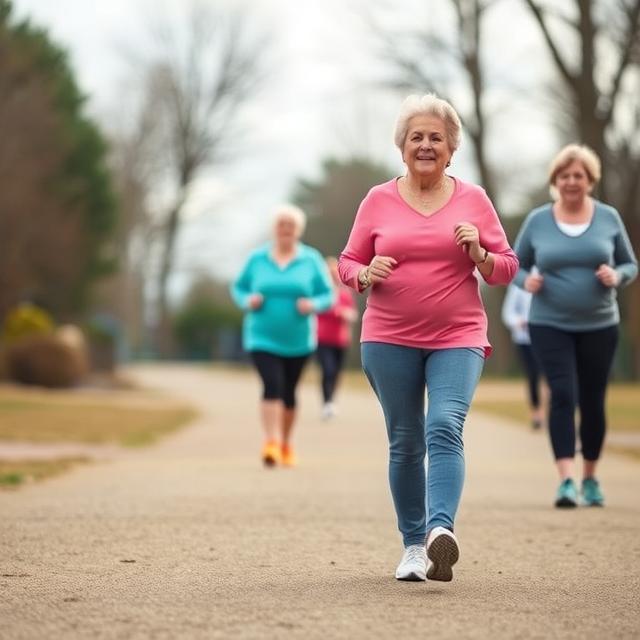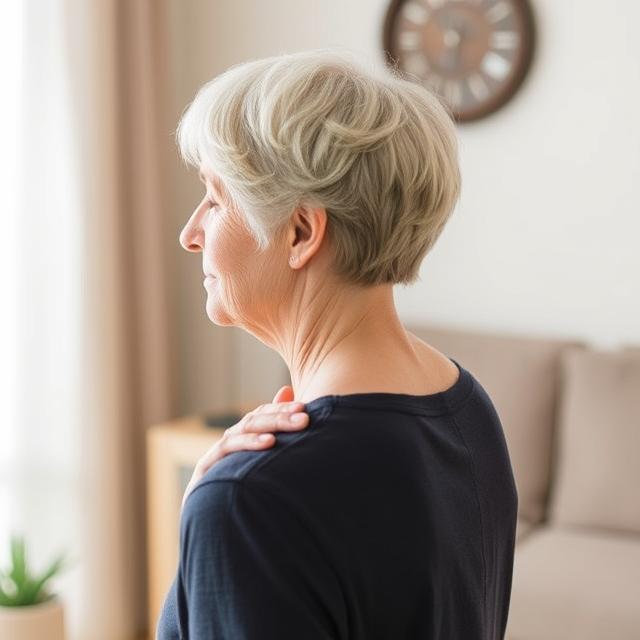Staying active is essential for maintaining health and vitality at any age, but especially for older women who want to enhance mobility, strength, and overall well-being without the need for a gym or complicated equipment. The good news is that simple workouts can be done comfortably at home, tailored to accommodate varying fitness levels and reduce the risk of injury. These exercises focus on gentle strength building, improving balance, flexibility, and cardiovascular health—all critical for maintaining independence and quality of life. By incorporating just a few minutes of these workouts into a daily routine, older women can experience increased energy, better mood, and a stronger body capable of handling everyday tasks with ease. Below are six accessible and effective workouts designed specifically with older women in mind, each explained with detailed guidance to ensure safety and maximize benefits.
1. Chair Squats for Strength and Stability
Chair squats are an excellent way to build lower body strength while ensuring safety through controlled movement. This exercise targets the thighs, hips, and glutes, which are crucial for maintaining balance and preventing falls. To begin, position yourself in front of a sturdy chair with feet shoulder-width apart. Slowly bend your knees and lower your body towards the chair as if you are going to sit, keeping your back straight and core engaged. When your buttocks lightly touch the chair, pause briefly and then press through your heels to stand back up. This movement can be repeated 10 to 15 times, with a rest in between sets if needed. Chair squats are gentle on the knees but powerful for maintaining muscle mass, which tends to decrease with age. Additionally, practicing this motion can improve confidence in everyday movements such as sitting down and standing up from a seated position. It’s an ideal workout for beginners because the chair provides support, reducing strain and encouraging proper form.

2. Wall Push-Ups to Build Upper Body Strength
Wall push-ups are a fantastic modification of the traditional push-up, tailored for older women who may find floor push-ups too challenging or stressful on the wrists and shoulders. Standing about an arm’s length from a wall, place your palms flat against the surface at shoulder height and shoulder-width apart. Keeping your body straight from head to heels, bend your elbows to slowly bring your chest towards the wall. Pause for a moment, then push back to the starting position. This controlled motion strengthens the chest, shoulders, and arms, which helps with daily activities like carrying groceries or lifting objects. Wall push-ups can be performed in sets of 10 to 15 repetitions, gradually increasing as strength improves. The beauty of this exercise lies in its adaptability; you can vary the difficulty by stepping closer or further from the wall. Regularly practicing wall push-ups will enhance muscular endurance, improve posture, and reduce the risk of upper body injuries.

3. Seated Leg Lifts for Lower Limb Mobility
Seated leg lifts provide a low-impact way to strengthen the muscles around the hips and thighs, critical areas for walking, standing, and maintaining balance. To perform this exercise, sit upright in a sturdy chair with your feet flat on the floor. Slowly extend one leg straight out in front of you until it’s parallel to the floor. Hold this position for a few seconds while engaging your thigh muscles, then lower the leg back down without letting your foot touch the floor. Repeat this movement 10 to 15 times for each leg, resting as needed. Seated leg lifts help improve circulation, enhance joint flexibility, and build muscle endurance without placing stress on the knees or hips. This makes it perfect for women dealing with arthritis or mobility limitations. Over time, this exercise promotes better posture and smoother, more confident movements during daily activities such as walking or climbing stairs.

4. Gentle Standing March for Cardiovascular Health
A gentle standing march is a simple yet effective way to boost cardiovascular fitness while improving coordination and balance. Begin by standing tall with feet hip-width apart and arms relaxed at your sides. Slowly lift one knee towards your chest while swinging the opposite arm forward, then switch sides in a marching rhythm. This movement should be performed at a comfortable pace, ensuring balance is maintained throughout. Marching in place for 2 to 3 minutes can elevate the heart rate safely and stimulate circulation without overwhelming the body. For added challenge, increase the duration or lift the knees slightly higher. This exercise is great for older women who may feel intimidated by traditional cardio workouts like running or jumping. It supports heart health, enhances leg strength, and encourages rhythmic breathing. Regular practice also helps reduce stiffness and prepares the body for more complex movements.

5. Toe Raises to Improve Balance and Ankle Strength
Toe raises focus on strengthening the calves and improving ankle stability, which are vital for preventing falls and improving walking confidence. To perform this exercise, stand near a wall or a sturdy chair for support. Slowly rise up onto the balls of your feet, lifting your heels off the ground. Hold the raised position for a couple of seconds, then gently lower your heels back down. Aim for 10 to 15 repetitions, gradually increasing as your strength and balance improve. This workout helps develop the muscles that control ankle movement and supports overall balance. It is especially beneficial for older women who experience weak ankles or feel unsteady when walking. Toe raises also promote better posture by engaging the muscles of the lower leg and feet. Performing this exercise daily can enhance stability, making activities like walking on uneven surfaces safer and easier.

6. Neck and Shoulder Rolls to Relieve Tension and Improve Flexibility
Neck and shoulder rolls are simple movements that relieve muscle tension, improve flexibility, and promote relaxation—common issues faced by many older women due to poor posture or prolonged sitting. To begin, sit or stand comfortably with your spine straight. Slowly roll your shoulders backward in a circular motion five times, then reverse the direction. Next, gently drop your chin towards your chest and slowly roll your head in a circle to one side, completing five rotations before switching directions. These slow, deliberate movements increase blood flow to the neck and shoulder muscles, reduce stiffness, and enhance range of motion. This exercise is particularly helpful for women who experience neck pain or shoulder tightness from daily habits or stress. Including neck and shoulder rolls in a daily routine promotes relaxation, reduces discomfort, and prepares the upper body for other physical activities by warming up key muscle groups.

Incorporating these six simple workouts into a daily or weekly routine can significantly improve physical health and emotional well-being for older women. Each exercise is designed to be gentle yet effective, focusing on strength, balance, flexibility, and cardiovascular health—cornerstones of healthy aging. By exercising consistently, older women can maintain independence, reduce the risk of falls, and enjoy a more active and fulfilling lifestyle. The best part is that these workouts require minimal space and no special equipment, making them accessible and convenient. Taking small steps toward fitness at home fosters confidence and promotes a positive mindset, empowering women to embrace aging with strength and grace. Starting with these manageable exercises can open the door to a lifetime of wellness and vitality.


